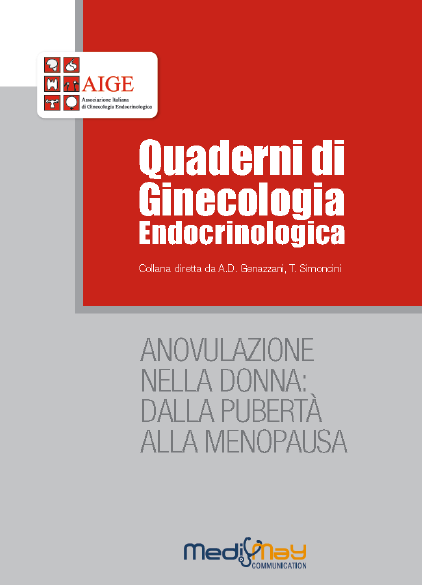-
-
María S. Vallejo-Maldonado
Hormone therapy for menopause: why should it be prescribed? European Gynecology and Obstetrics. 2023; 5(2):83-88
DownloadAbstract
During the climacteric, many women present different symptoms that affect their quality of life. These symptoms have been related to disorders of the neurochemistry of the central nervous system caused by fluctuations and/or lack of estrogen. Brain chemistry disorders that occur during the climacteric would also be involved in changes in body composition and the increase of adipose tissue. In obesity, the adipocyte produces adipocytokines that lead to a chronic inflammatory state that increases the risk of diabetes, hypertension and hypercoagulability, hence, increasing cardiovascular risk. Estrogen deficiency also modulates cellular signals (RANKL, NPY) that favor bone resorption and the risk of osteoporosis. In addition, obesity increases the risk of breast, endometrial, colon, and gallbladder cancer by increasing leptin and interleukin-6. Also, important to mention is that fact some studies have also suggested an anti-Alzheimer action of ovarian steroids. Menopausal hormone therapy (MHT) continues to be the gold standard for the treatment of vasomotor symptoms, genitourinary syndrome of menopause (GSM), and sleep problems, thus, significantly improving female well-being and quality of life. Due to its metabolic effects, it would play a role in the prevention of bone loss, fractures and other chronic diseases, hence decreasing mortality. Not prescribing MHT to women who need it means depriving them of a potentially beneficial therapy for their health. The aim of this review is to substantiate the reasons why doctors, decide to prescribe MHT to their patients
-
Laura Gaspari, Françoise Paris, Nicolas Kalfa, Charles Sultan
Primary Amenorrhea in Adolescents: Approach to Diagnosis and Management Endocrines 2023, 4, 536–547.
DownloadAbstract
Primary amenorrhea (PA) describes the complete absence of menses by the age of 15 years. It is a devastating diagnosis that can affect the adolescent’s view of her femininity, sexuality, fertility and self-image. A normal menstrual cycle can occur only in the presence of: a properly functioning hypothalamus–pituitary axis, well-developed and active ovaries, outflow tract without abnormalities. Any dysfunction in any of these players can result in amenorrhea. PA evaluation includes the patient’s medical history, physical examination, pelvic ultrasonography and initial hormone evaluation, limited to the serum-follicle-stimulating hormone (FSH) and luteinizing hormone, testosterone and prolactin. A karyotype should be obtained in all adolescents with high FSH serum levels. The main causes of PA, whether or not accompanied by secondary sexual characteristics, include endocrine defects of the hypothalamus–pituitary–ovarian axis, genetic defects of the ovary, metabolic diseases, autoimmune diseases, infections, iatrogenic causes (radiotherapy, chemotherapy), environmental factors and Müllerian tract defects. PA management depends on the underlying causes. Estrogen replacement therapy at puberty has mainly been based on personal experience. PA can be due to endocrine, genetic, metabolic, anatomical and environmental disorders that may have severe implications on reproductive health later in life. In some complex cases, a multidisciplinary team best manages the adolescent, including a pediatrician endocrinologist, gynecologist, geneticist, surgeon, radiologist, and psychologist.
-
Alfonso Moreno-Cabañas, Felix Morales-Palomo, Laura Alvarez-Jimenez, Diego Mora-Gonzalez, Juan Fernando Ortega, Ricardo Mora-Rodrigue
Metformin and exercise effects on postprandial insulin sensitivity and glucose kinetics in pre-diabetic and diabetic adultsAm J Physiol Endocrinol Metab 2023; 325(4):E310-E324.Abstract
The potential interaction between metformin and exercise on glucose-lowering effects remains controversial. We studied the separated and combined effects of metformin and/or exercise on fasting and postprandial insulin sensitivity in individuals with pre-diabetes and type 2 diabetes (T2D). Eight T2D adults (60 ± 4 yr) with overweight/obesity (32 ± 4 kg·m-2) under chronic metformin treatment (9 ± 6 yr; 1281 ± 524 mg·day-1) underwent four trials; 1) taking their habitual metformin treatment (MET), 2) substituting during 96 h their metformin medication by placebo (PLAC), 3) placebo combined with 50 min bout of high-intensity interval exercise (PLAC + EX), and 4) metformin combined with exercise (MET + EX). Plasma glucose kinetics using stable isotopes (6,6-2H2 and [U-13C] glucose), and glucose oxidation by indirect calorimetry, were assessed at rest, during exercise, and in a subsequent oral glucose tolerance test (OGTT). Postprandial glucose and insulin concentrations were analyzed as mean and incremental area under the curve (iAUC), and insulin sensitivity was calculated (i.e., MATSUDAindex and OGISindex). During OGTT, metformin reduced glucose iAUC (i.e., MET and MET + EX lower than PLAC and PLAC + EX, respectively; P = 0.023). MET + EX increased MATSUDAindex above PLAC (4.8 ± 1.4 vs. 3.3 ± 1.0, respectively; P = 0.018) and OGISindex above PLAC (358 ± 52 vs. 306 ± 46 mL·min-1·m-2, respectively; P = 0.006). Metformin decreased the plasma appearance of the ingested glucose (Ra OGTT; MET vs. PLAC, -3.5; 95% CI -0.1 to -6.8 µmol·kg-1·min-1; P = 0.043). Metformin combined with exercise potentiates insulin sensitivity during an OGTT in individuals with pre-diabetes and type 2 diabetes. Metformin’s blood glucose-lowering effect seems mediated by decreased oral glucose entering the circulation (gut-liver effect) an effect partially blunted after exercise.NEW & NOTEWORTHY Metformin is the most prescribed oral antidiabetic medicine in the world but its mechanism of action and its interactions with exercise are not fully understood. Our stable isotope tracer data suggested that metformin reduces the rates of oral glucose entering the circulation (gut-liver effect). Exercise, in turn, tended to reduce postprandial insulin blood levels potentiating metformin improvements in insulin sensitivity. Thus, exercise potentiates metformin improvements in glycemic control and should be advised to metformin users.
-
Helena J. Teede, Chau Thien Tay, Joop Laven, Anuja Dokras, Lisa J. Moran, Terhi T. Piltonen, Michael F. Costello, Jacky Boivin, Leanne M. Redman, Jacqueline A. Boyle, Robert. J. Norman, Aya Mousa, Anju E. Johama, on behalf of the International PCOS Network
Recommendations from the 2023 International Evidence-based Guideline for the Assessment and Management of Polycystic Ovary SyndromeFertil Steril 2023;120:767–93
DownloadAbstract
STUDY QUESTION: What is the recommended assessment and management of those with polycystic ovary syndrome (PCOS), based on the best available evidence, clinical expertise, and consumer preference?
SUMMARY ANSWER: International evidence-based guidelines address prioritized questions and outcomes and include 254 recommendations and practice points, to promote consistent, evidence-based care and improve the experience and health outcomes in PCOS. WHAT IS KNOWN ALREADY: The 2018 International PCOS Guideline was independently evaluated as high quality and integrated multidisciplinary and consumer perspectives from six continents; it is now used in 196 countries and is widely cited. It was based on best available, but generally very low to low quality, evidence. It applied robust methodological processes and addressed shared priorities. The guideline transitioned from consensus based to evidence-based diagnostic criteria and enhanced accuracy of diagnosis, whilst promoting consistency of care. However, diagnosis is still delayed, the needs of those with PCOS are not being adequately met, evidence quality was low and evidence-practice gaps persist. STUDY DESIGN, SIZE, DURATION: The 2023 International Evidence-based Guideline update reengaged the 2018 network across professional societies and consumer organizations with multidisciplinary experts and women with PCOS directly involved at all stages. Extensive evidence synthesis was completed. Appraisal of Guidelines for Research and Evaluation-II (AGREEII)-compliant processes were followed. The Grading of Recommendations, Assessment, Development, and Evaluation (GRADE) framework was applied across evidence quality, feasibility, acceptability, cost, implementation and ultimately recommendation strength and diversity and inclusion were considered throughout.
PARTICIPANTS/ MATERIALS, SETTING, METHODS: This summary should be read in conjunction with the full Guideline for detailed participants and methods. Governance included a six-continent international advisory and management committee, five guideline development groups, and paediatric, consumer, and translation committees. Extensive consumer engagement and guideline experts informed the update scope and priorities. Engaged international society-nominated panels included paediatrics, endocrinology, gynaecology, primary care, reproductive endocrinology, obstetrics, psychiatry, psychology, dietetics, exercise physiology, obesity care, public health and other experts, alongside consumers, project management, evidence synthesis, statisticians and translation experts. Thirty-nine professional and consumer organizations covering 71 countries engaged in the process. Twenty meetings and five face-to-face forums over 12 months addressed 58 prioritized clinical questions involving 52 systematic and 3 narrative reviews. Evidence-based recommendations were developed and approved via consensus across five guideline panels, modified based on international feedback and peer review, independently reviewed for methodological rigour, and approved by the Australian Government National Health and Medical Research Council (NHMRC).
MAIN RESULTS AND THE ROLE OF CHANCE: The evidence in the assessment and management of PCOS has generally improved in the past five years, but remains of low to moderate quality. The technical evidence report and analyses (6000 pages) underpins 77 evidence-based and 54 consensus recommendations, with 123 practice points. Key updates include: i) further refinement of individual diagnostic criteria, a simplified diagnostic algorithm and inclusion of anti-Mullerian hormone (AMH) levels as an € alternative to ultrasound in adults only; ii) strengthening recognition of broader features of PCOS including metabolic risk factors, cardiovascular disease, sleep apnea, very high prevalence of psychological features, and high risk status for adverse outcomes during pregnancy; iii) emphasizing the poorly recognized, diverse burden of disease and the need for greater healthcare professional education, evidence-based patient information, improved models of care and shared decision making to improve patient experience, alongside greater research; iv) maintained emphasis on healthy lifestyle, emotional wellbeing and quality of life, with awareness and consideration of weight stigma; and v) emphasizing evidence-based medical therapy and cheaper and safer fertility management.
LIMITATIONS, REASONS FOR CAUTION: Overall, recommendations are strengthened and evidence is improved, but remain generally low to moderate quality. Significantly greater research is now needed in this neglected, yet common condition. Regional health system variation was considered and acknowledged, with a further process for guideline and translation resource adaptation provided. WIDER IMPLICATIONS OF THE FINDINGS: The 2023 International Guideline for the Assessment and Management of PCOS provides clinicians and patients with clear advice on best practice, based on the best available evidence, expert multidisciplinary input and consumer preferences. Research recommendations have been generated and a comprehensive multifaceted dissemination and translation programme supports the Guideline with an integrated evaluation program. -
Thanh Ha Luu, Katherine Kuhn, Andrew P. Bradford, Michael F. Wempe, Luke Wittenburg, Rachel L. Johnson, Nichole E. Carlson, T. Rajendra Kumar, Alex J. Polotsky
Effects of pulsatile intravenous follicle-stimulating hormone treatment on ovarian function in women with obesity Fertil Steril 2023;120:890–8
DownloadAbstract
Objective: To establish conditions for effective hypothalamic suppression in women with normal and high body mass index (BMI) and test the hypothesis that intravenous (IV) administration of pulsatile recombinant follicle-stimulating hormone (rFSH) can overcome the clinically evident dysfunctional pituitary-ovarian axis in women with obesity. Design: Prospective interventional study. Setting: Academic medical center.
Patient(s): Twenty-seven normal-weight women and 27 women with obesity, who were eumenorrheic and aged 21–39 years. Intervention(s): Two-day frequent blood sampling study, in early follicular phase, before and after cetrorelix suppression of gonadotropins and exogenous pulsatile IV rFSH administration.
Main Outcome Measure(s): Serum inhibin B and estradiol (E2) levels (basal and rFSH stimulated). Result(s): A modified gonadotropin-releasing hormone antagonism protocol effectively suppressed production of endogenous gonadotropins in women with normal and high BMIs, providing a model to address the functional role of FSH in the hypothalamicpituitary-ovarian axis. The IV rFSH treatment resulted in equivalent serum levels and pharmacodynamics in normal-weight women and those with obesity. However, women with obesity exhibited reduced basal levels of inhibin B and E2 and a significantly decreased response to FSH stimulation. The BMI was inversely correlated with serum inhibin B and E2. In spite of this observed deficit in ovarian function, pulsatile IV rFSH treatment in women with obesity resulted in E2 and inhibin B levels comparable with those in normal-weight women, in the absence of exogenous FSH stimulation.
Conclusion(s): Despite normalization of FSH levels and pulsatility by exogenous IV administration, women with obesity demonstrate ovarian dysfunction with respect to E2 and inhibin B secretion. Pulsatile FSH can partially correct the relative hypogonadotropic hypogonadism of obesity, thereby providing a potential treatment strategy to mitigate some of the adverse effects of high BMI on fertility, assisted reproduction, and pregnancy outcomes. -
Kim van der Ham, Karlijn J. Stekelenburg, Yvonne V. Louwers, Wendy van Dorp, Marco W. J. Schreurs, Ronald van der Wal, Re´gine P. M. Steegers-Theunissen, Joop S. E. Laven
The prevalence of thyroid dysfunction and hyperprolactinemia in women with PCOS Front. Endocrinol. 14:1245106.
DownloadAbstract
Introduction: Ovulatory dysfunction is usually caused by an endocrine disorder, of which polycystic ovary syndrome (PCOS) is the most common cause. PCOS is usually associated with estrogen levels within the normal range and can be characterized by oligo-/anovulation resulting in decreased progesterone levels. It is suggested that decreased progesterone levels may lead to more autoimmune diseases in women with PCOS. In addition, it is often claimed that there is an association between hyperprolactinemia and PCOS. In this large well-phenotyped cohort of women with PCOS, we have studied the prevalence of thyroid dysfunction and hyperprolactinemia compared to controls, and compared this between the four PCOS phenotypes.
Methods: This retrospective cross-sectional study contains data of 1429 women with PCOS and 299 women without PCOS. Main outcome measures included thyroid stimulating hormone (TSH), Free Thyroxine (FT4), and anti-thyroid peroxidase antibodies (TPOab) levels in serum, the prevalence of thyroid diseases and hyperprolactinemia.
Results: The prevalence of thyroid disease in PCOS women was similar to that of controls (1.9% versus 2.7%; P = 0.39 for hypothyroidism and 0.5% versus 0%; P = 0.99 for hyperthyroidism). TSH levels were also similar (1.55 mIU/L versus 1.48 mIU/L; P = 0.54). FT4 levels were slightly elevated in the PCOS group, although within the normal range (18.1 pmol/L versus 17.7 pmol/L; P < 0.05). The prevalence of positive TPOab was similar in both groups (5.7% versus 8.7%; P = 0.12). The prevalence of hyperprolactinemia was similarly not increased in women with PCOS (1.3%% versus 3%; P = 0.05). In a subanalysis of 235 women with PCOS and 235 age- and BMI-matched controls, we found no differences in thyroid dysfunction or hyperprolactinemia. In according to differences between PCOS phenotypes, only the prevalence of subclinical hypothyroidism was significantly higher in phenotype B (6.3%, n = 6) compared to the other phenotypes. Conclusion: Women with PCOS do not suffer from thyroid dysfunction more often than controls. Also, the prevalence of positive TPOab, being a marker for future risk of thyroid pathology, was similar in both groups. Furthermore, the prevalence of hyperprolactinemia was similar in women with PCOS compared to controls. -
The Guideline Group on Unexplained Infertility, D. Romualdi, B. Ata, S. Bhattacharya, E. Bosch, M. Costello, K. Gersak, R. Homburg, M. Mincheva, R. J. Norman, T. Piltonen, S. Dos Santos-Ribeiro, D. Scicluna, S. Somers, S. K. Sunkara, H. R. Verhoeve, N. Le Clef
Evidence-based guideline: unexplained infertility Human Reproduction, 2023, 38(10), 1881–1890.
DownloadAbstract
STUDY QUESTION: What is the recommended management for couples presenting with unexplained infertility (UI), based on the best available evidence in the literature?
SUMMARY ANSWER: The evidence-based guideline on UI makes 52 recommendations on the definition, diagnosis, and treatment of UI.
WHAT IS KNOWN ALREADY: UI is diagnosed in the absence of any abnormalities of the female and male reproductive systems after ‘standard’ investigations. However, a consensual standardization of the diagnostic work-up is still lacking. The management of UI is traditionally empirical. The efficacy, safety, costs, and risks of treatment options have not been subjected to robust evaluation.
STUDY DESIGN, SIZE, DURATION: The guideline was developed according to the structured methodology for ESHRE guidelines. Following formulation of key questions by a group of experts, literature searches, and assessments were undertaken. Papers written in English and published up to 24 October 2022 were evaluated.
PARTICIPANTS/MATERIALS, SETTING, METHODS: Based on the available evidence, recommendations were formulated and discussed until consensus was reached within the guideline development group (GDG). Following stakeholder review of an initial draft, the final version was approved by the GDG and the ESHRE Executive Committee.
MAIN RESULTS AND THE ROLE OF CHANCE: This guideline aims to help clinicians provide the best care for couples with UI. As UI is a diagnosis of exclusion, the guideline outlined the basic diagnostic procedures that couples should/could undergo during an infertility work-up, and explored the need for additional tests. The first-line treatment for couples with UI was deemed to be IUI in combination with ovarian stimulation. The place of additional and alternative options for treatment of UI was also evaluated. The GDG made 52 recommendations on diagnosis and treatment for couples with UI. The GDG formulated 40 evidence-based recommendations—of which 29 were formulated as strong recommendations and 11 as weak—10 good practice points and two research only recommendations. Of the evidence-based recommendations, none were supported by high-quality evidence, one by moderatequality evidence, nine by low-quality evidence, and 31 by very low-quality evidence. To support future research in UI, a list of research recommendations was provided. -
Sara L. White, Albert Koulman, Susan E. Ozanne, Samuel Furse, Lucilla Poston, Claire L. Meek
Towards Precision Medicine in Gestational Diabetes: Pathophysiology and Glycemic Patterns in Pregnant Women With ObesityThe Journal of Clinical Endocrinology & Metabolism, 2023, 108, 2643–2652.Abstract
Aims: Precision medicine has revolutionized our understanding of type 1 diabetes and neonatal diabetes but has yet to improve insight into gestational diabetes mellitus (GDM), the most common obstetric complication and strongly linked to obesity. Here we explored if patterns of glycaemia (fasting, 1 hour, 2 hours) during the antenatal oral glucose tolerance test (OGTT), reflect distinct pathophysiological subtypes of GDM as defined by insulin secretion/sensitivity or lipid profiles.
Methods: 867 pregnant women with obesity (body mass index ≥ 30 kg/m2 ) from the UPBEAT trial (ISRCTN 89971375) were assessed for GDM at 28 weeks’ gestation (75 g oral glucose tolerance test OGTT; World Health Organization criteria). Lipid profiling of the fasting plasma OGTT sample was undertaken using direct infusion mass spectrometry and analyzed by logistic/linear regression, with and without adjustment for confounders. Insulin secretion and sensitivity were characterized by homeostatic model assessment 2b and 2s, respectively.
Results: In women who developed GDM (n = 241), patterns of glycaemia were associated with distinct clinical and biochemical characteristics and changes to lipid abundance in the circulation. Severity of glucose derangement, rather than pattern of postload glycaemia, was most strongly related to insulin action and lipid abundance/profile. Unexpectedly, women with isolated postload hyperglycemia had comparable insulin secretion and sensitivity to euglycemic women, potentially indicative of a novel mechanistic pathway.
Conclusions: Patterns of glycemia during the OGTT may contribute to a precision approach to GDM as assessed by differences in insulin resistance/secretion. Further research is indicated to determine if isolated postload hyperglycemia reflects a different mechanistic pathway for targeted management.
-
Abstracts selezionati
-
-
María S. Vallejo-Maldonado
Hormone therapy for menopause: why should it be prescribed? European Gynecology and Obstetrics. 2023; 5(2):83-88
Download -
Laura Gaspari, Françoise Paris, Nicolas Kalfa, Charles Sultan
Primary Amenorrhea in Adolescents: Approach to Diagnosis and Management Endocrines 2023, 4, 536–547.
Download -
Alfonso Moreno-Cabañas, Felix Morales-Palomo, Laura Alvarez-Jimenez, Diego Mora-Gonzalez, Juan Fernando Ortega, Ricardo Mora-Rodrigue
Metformin and exercise effects on postprandial insulin sensitivity and glucose kinetics in pre-diabetic and diabetic adultsAm J Physiol Endocrinol Metab 2023; 325(4):E310-E324. -
Helena J. Teede, Chau Thien Tay, Joop Laven, Anuja Dokras, Lisa J. Moran, Terhi T. Piltonen, Michael F. Costello, Jacky Boivin, Leanne M. Redman, Jacqueline A. Boyle, Robert. J. Norman, Aya Mousa, Anju E. Johama, on behalf of the International PCOS Network
Recommendations from the 2023 International Evidence-based Guideline for the Assessment and Management of Polycystic Ovary SyndromeFertil Steril 2023;120:767–93
Download -
Thanh Ha Luu, Katherine Kuhn, Andrew P. Bradford, Michael F. Wempe, Luke Wittenburg, Rachel L. Johnson, Nichole E. Carlson, T. Rajendra Kumar, Alex J. Polotsky
Effects of pulsatile intravenous follicle-stimulating hormone treatment on ovarian function in women with obesity Fertil Steril 2023;120:890–8
Download -
Kim van der Ham, Karlijn J. Stekelenburg, Yvonne V. Louwers, Wendy van Dorp, Marco W. J. Schreurs, Ronald van der Wal, Re´gine P. M. Steegers-Theunissen, Joop S. E. Laven
The prevalence of thyroid dysfunction and hyperprolactinemia in women with PCOS Front. Endocrinol. 14:1245106.
Download -
The Guideline Group on Unexplained Infertility, D. Romualdi, B. Ata, S. Bhattacharya, E. Bosch, M. Costello, K. Gersak, R. Homburg, M. Mincheva, R. J. Norman, T. Piltonen, S. Dos Santos-Ribeiro, D. Scicluna, S. Somers, S. K. Sunkara, H. R. Verhoeve, N. Le Clef
Evidence-based guideline: unexplained infertility Human Reproduction, 2023, 38(10), 1881–1890.
Download -
Sara L. White, Albert Koulman, Susan E. Ozanne, Samuel Furse, Lucilla Poston, Claire L. Meek
Towards Precision Medicine in Gestational Diabetes: Pathophysiology and Glycemic Patterns in Pregnant Women With ObesityThe Journal of Clinical Endocrinology & Metabolism, 2023, 108, 2643–2652.
-






